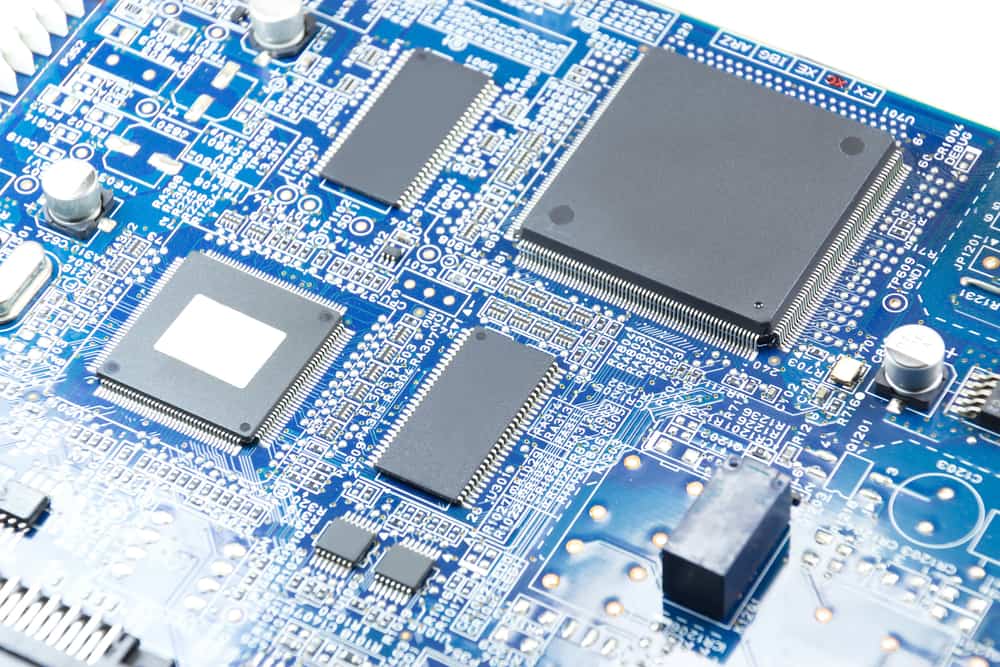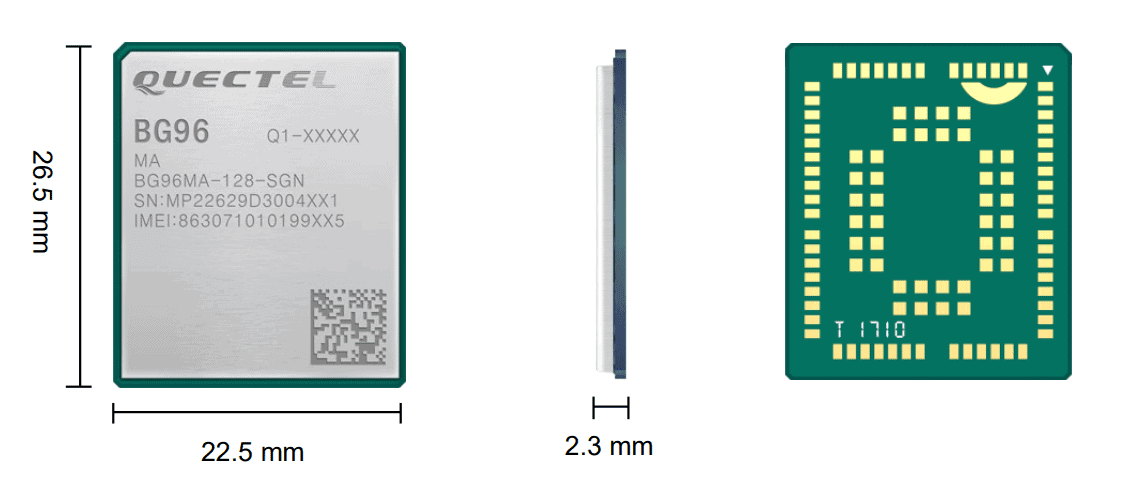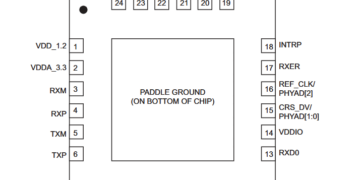
IoT products are not the rage in the news they used to be, but the available hardware platforms, developer resources, high-bandwidth protocols, and cloud platforms supporting new IoT ecosystems have never been greater. The market for internet or cellular capable products is expanding on the back of cloud infrastructure and, very soon, much greater availability of 5G. Designers have plenty of hardware options to develop a new hardware platform to support their own IoT ecosystem as long as they choose the right chipset or modules.
The BG96 from Quectel is one of the newer market entrants that aims to support new IoT hardware platforms with a 4G-LTE capable modem on an SMD module. These components come in a compact form factor with some integrated interfaces that reduce system chip count and cost. However, finding a BG96 datasheet and developer resources has been challenging ever since the component was introduced to the market. To help interested designers, we’ve compiled some of the main specifications in the BG96 datasheet and links to more resources designers need to use the BG96 module successfully.
Specifications in the BG96 Datasheet
The BG96 datasheet available from distributors is not a datasheet at all; it is simply a spec sheet that summarizes the capabilities of the BG96 module. Although the datasheet lacks specifications and programming information, the specifications are very competitive with other cellular-capable products on the market. Some of the main operating specifications are summarized in the table below.
| Input power | – Main power: Li-ion battery (3.7-3.8 V)
– IO power: 1.8 V nominal |
| Package size | 26.5 x 22.5 x 2.3 mm |
| Data rate | – Cat M1: Max. 375 kbps (DL), Max. 375 kbps (UL)
– Cat NB1: Max. 32 kbps (DL), Max. 70 kbps (UL) – EDGE: Max. 296 kbps (DL), Max. 236.8 kbps (UL) – GPRS: Max. 107 kbps (DL), Max. 85.6 kbps (UL) |
| Broadcast power | 23 dBm maximum |
| Interfaces | – USB 2.0 × 1 (With High Speed up to 480 Mbps)
– UART × 3 – PCM × 1 – ADC × 2 (15 bits) – GPIO × 2 (I2C and UART3 Can be re-configured as 4 GPIOs) – (U)SIM × 1 – Main and GNSS antenna interfaces |
| Power consumption (estimated average) | Approximately 830 mW at 23 dBm broadcast |
| Optional navigation | GPS, GLONASS, BeiDou/Compass, Galileo, QZSS |
| Firmware | Upgradeable via USB |
Navigation
The optional navigation feature is useful for mobile applications where an embedded device requires global positioning. These devices can be queried via the cellular network to capture their coordinates and report the data back to the requester; this is typically done through a web or console application over the internet, either on a network or through an MQTT broker. Typical application areas for this type of system include telematics, logistics, and embedded sensor modules.
Powering the BG96
One simple specification that is not obvious from looking at product descriptions of the BG96 or the BG96 datasheet is the power requirements. In fact, these values are not found in the BG96 product specification sheet at all and are instead found in a separate hardware development guide.
The BG96 is intended to run in IoT devices that are battery-powered. The average power consumption value stated above would allow a device powered with a 4000 mAh Li-ion battery to broadcast constantly for approximately 4.85 hours, assuming any other components and interfaces operating on the product are negligible. Because the BG96 includes a USB interface, USB charging can be integrated into the design to charge battery power.
Although the BG96 is intended to operate with battery power, it could be used with a 5 V power source that is stepped down to at least 3.3 V with an LDO or switching regulator. An additional regulator would then be needed to drop the 3.3 V power net to 1.8 V to provide power for the GPIOs on the BG96. These two regulator stages would cover power for most other peripherals you would expect to see in a cellular-capable IoT product without high-speed embedded computing capabilities.
Packaging and Layout
The BG96 is highly integrated into a small package (see the drawing below) to minimize peripheral component count. Based on the available interfaces, designers could conceivably build an IoT platform using the BG96 as a single-chip solution as long as non-USB high speed peripherals are not required. The antenna interface is matched to the standard 50 Ohm impedance and does not require termination on the output. An external antenna may require termination and must be carefully designed on the PCB to provide maximum range. BG96 package size.
BG96 package size.
Since the BG96 datasheet is difficult to find, you can use the parts search features in Ultra Librarian to find the technical data and CAD models you’ll need to work with this component. The Ultra Librarian platform gives you access to PCB footprints, technical data, and ECAD/MCAD models alongside sourcing information to help you stay ahead of supply chain volatility. All ECAD data you’ll find on Ultra Librarian is compatible with popular ECAD applications and is verified by component manufacturers to help streamline your designing process.
Working with Ultra Librarian sets up your team for success to ensure streamlined and error-free design, production, and sourcing. Register today for free.








